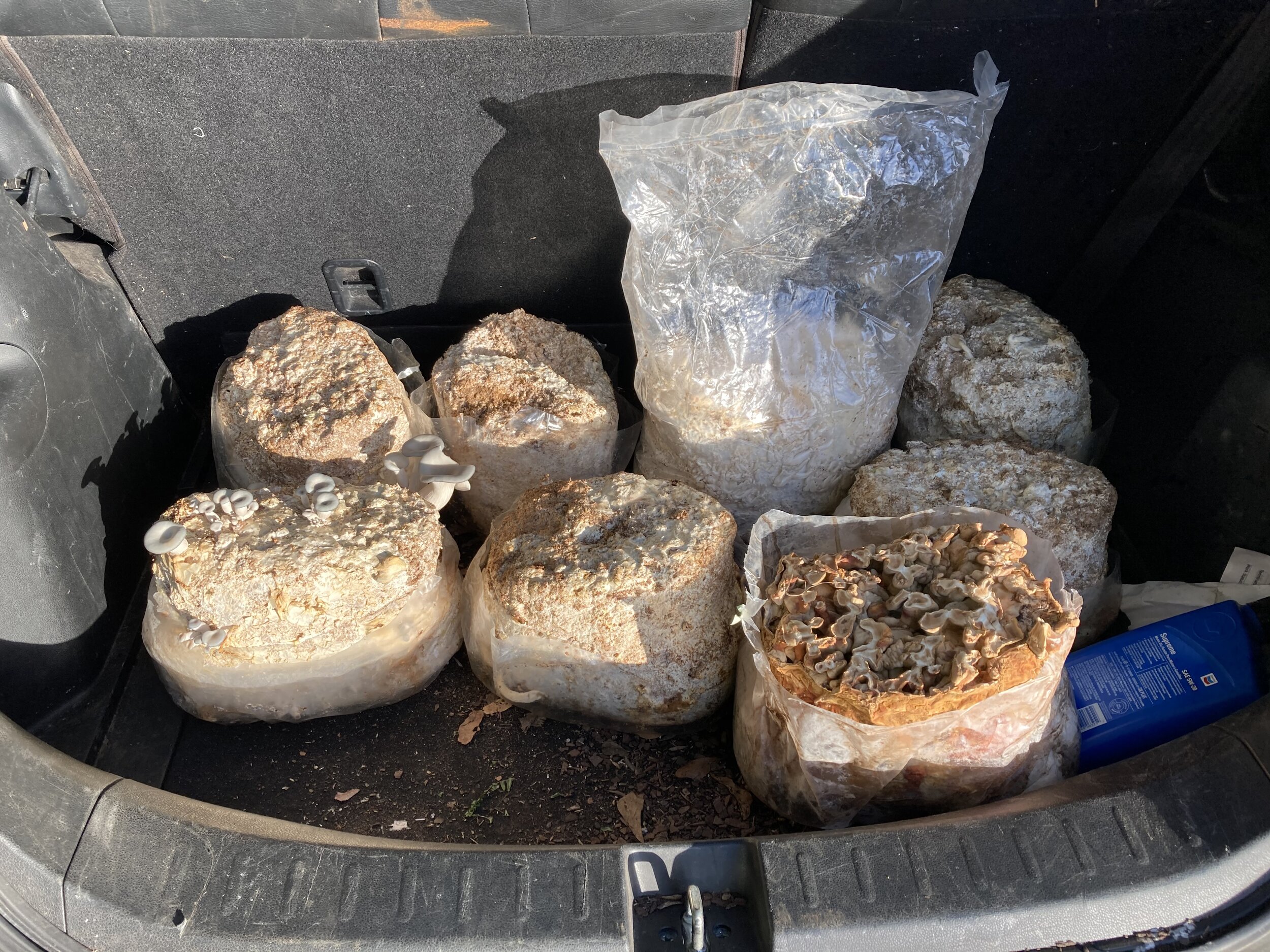Over the past few years, I’ve found myself obsessed with the idea of making paper out of fungi. Luckily, Tim Pfitzer at @herbincalabama and @magiccitymushrooms was kind enough to donate spores and mycelium for me to experiment with.
Fungi does not contain cellulose; its cell walls contain chitin, which also makes up exoskeletons of some arthropods (insects, crustaceans, etc). “Paper” that is made from 100% mushrooms has less integrity than cellulose-based paper but it has a felt-like, slightly spongy, and very interesting texture.
A polypore or conk mushroom
I first experimented with making mushroom paper from polypore mushrooms in January 2020 while I was working on my book Mycorrhizae. I had already made recycled paper that I “innoculated” with chanterelle mushroom spores, but I wanted to try making 100% mushroom “paper.” I soaked the polypores for 3 weeks, cooked briefly to kill critters, then cut them up and blended. I then pulled sheets with friends Josh & Nicole. The dry paper has such a cool, fabric-like feel to it!
Mushroom bags from Magic City Mushrooms. Score!
This summer, the mushroom + paper saga continues…. I picked up some already-fruited bags of blue oyster and reishi mycelium from Magic City Mushrooms in Birmingham. I picked off the white mycelium and composted the remaining sawdust substrate, trying to remove as much sawdust as possible (I will try to do better with this in the next batch, though). Then, I beat a pulp of 75% recycled paper and 25% mycelium and pulled sheets with poet/geographer Josh Dugat. Many thanks to the MFA Book Arts program at The University of Alabama for use of their Reina beater!
The final paper is very speckled/textured and a little spongy! Josh and I will be using this for the cover of a new collaborative book called Hy-phae/phen.
I am planning to try different mixtures and proportions to get the right texture and consistency for printmaking and writing, and I’ll try my hand at making polypore paper again if we get some good rain.












